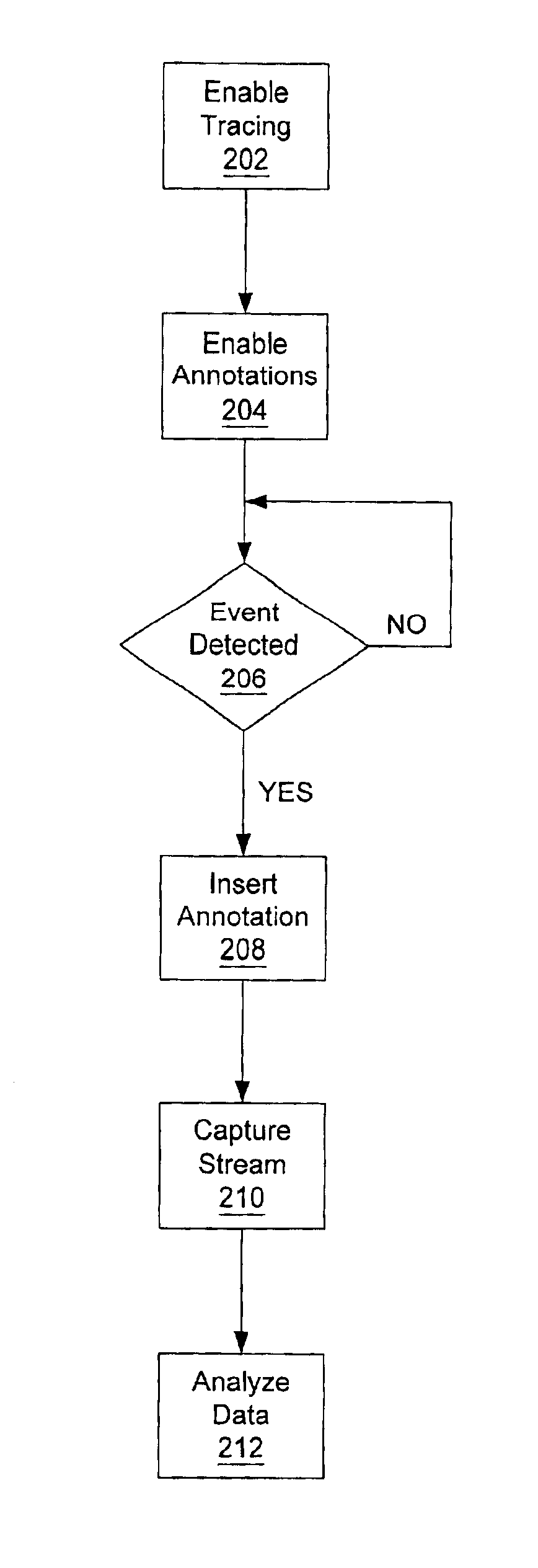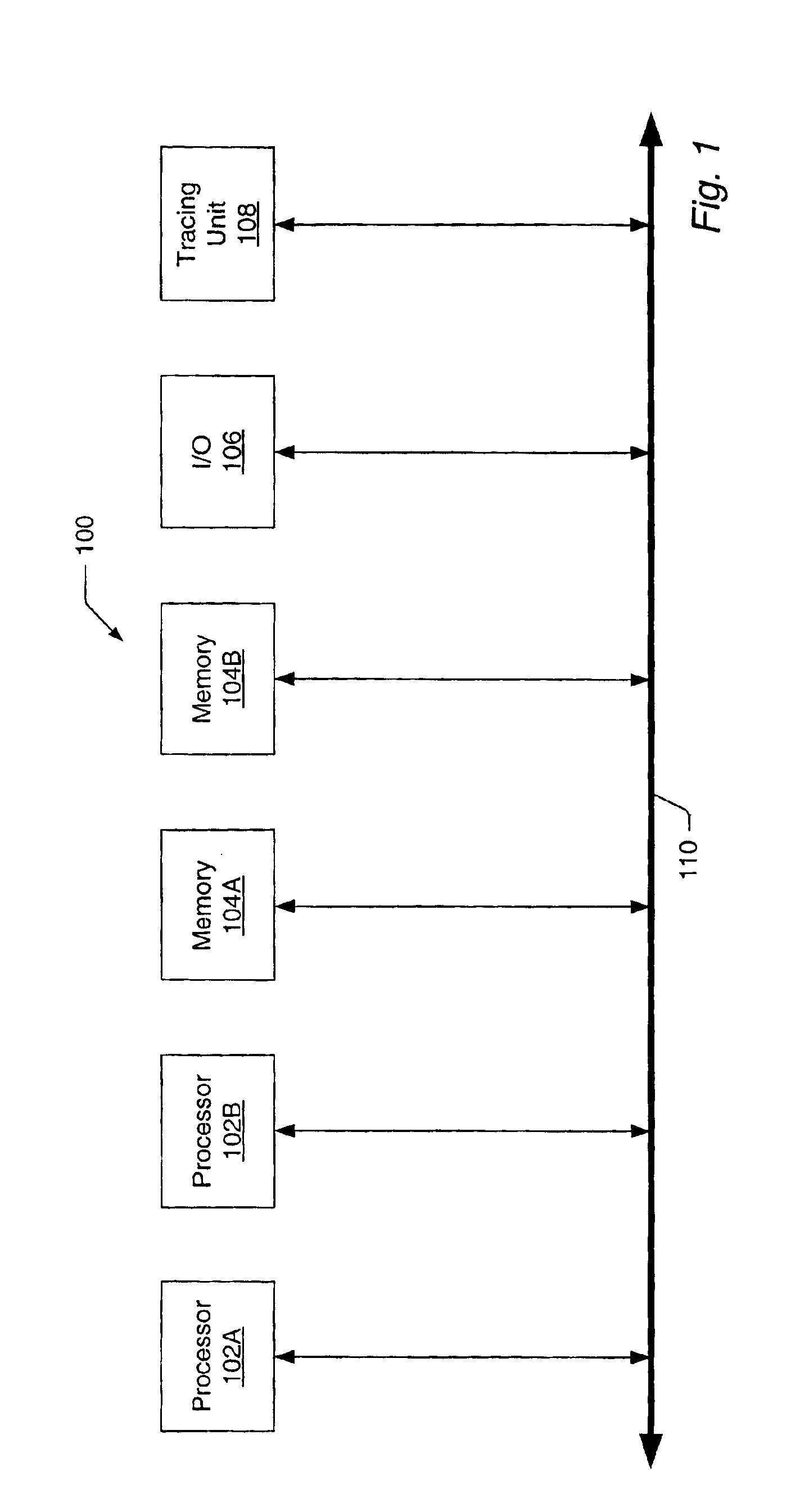Annotations for transaction tracing
a technology of transaction tracing and annotation, applied in the field of computing systems, can solve problems such as unneeded bus transactions, reduced performance, and resource retention, and achieve the effect of improving debugging and performance analysis
- Summary
- Abstract
- Description
- Claims
- Application Information
AI Technical Summary
Benefits of technology
Problems solved by technology
Method used
Image
Examples
Embodiment Construction
Overview
[0025]In order to address the problems discussed above, a method and mechanism utilizing “transaction annotations” is described. Generally speaking, transaction annotations are additional transactions which mark places in the traced transaction stream. Their purpose is to denote some state change of interest which may be used during analysis of the traced stream. In one embodiment, these transaction annotations may be utilized by an analysis program to build a current state table during analysis of the captured data. For example, by using an annotation which indicates a CPU has switched to interrupt mode, all subsequent transactions for that CPU, until the next context switch annotation, are known to have been generated by the interrupt handling code. Having such knowledge may greatly assist in the analysis process. Various embodiments and uses of transaction annotations are possible and are contemplated. Some examples of such uses are described in the following discussion.
[...
PUM
 Login to View More
Login to View More Abstract
Description
Claims
Application Information
 Login to View More
Login to View More - R&D
- Intellectual Property
- Life Sciences
- Materials
- Tech Scout
- Unparalleled Data Quality
- Higher Quality Content
- 60% Fewer Hallucinations
Browse by: Latest US Patents, China's latest patents, Technical Efficacy Thesaurus, Application Domain, Technology Topic, Popular Technical Reports.
© 2025 PatSnap. All rights reserved.Legal|Privacy policy|Modern Slavery Act Transparency Statement|Sitemap|About US| Contact US: help@patsnap.com



